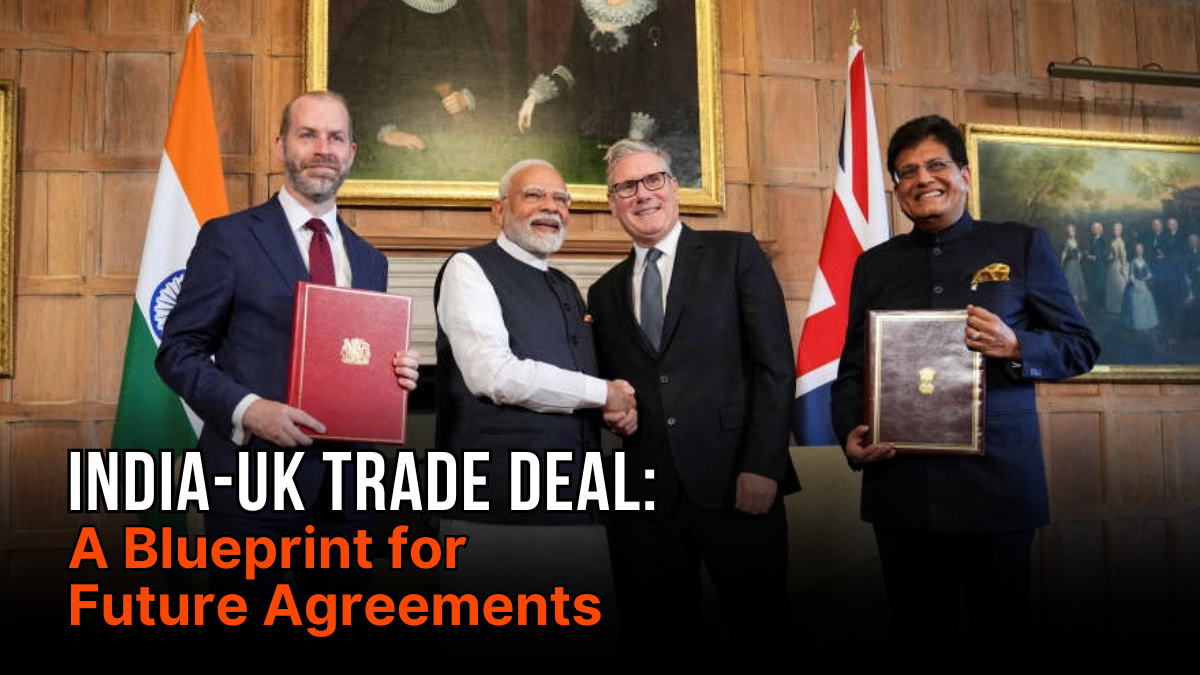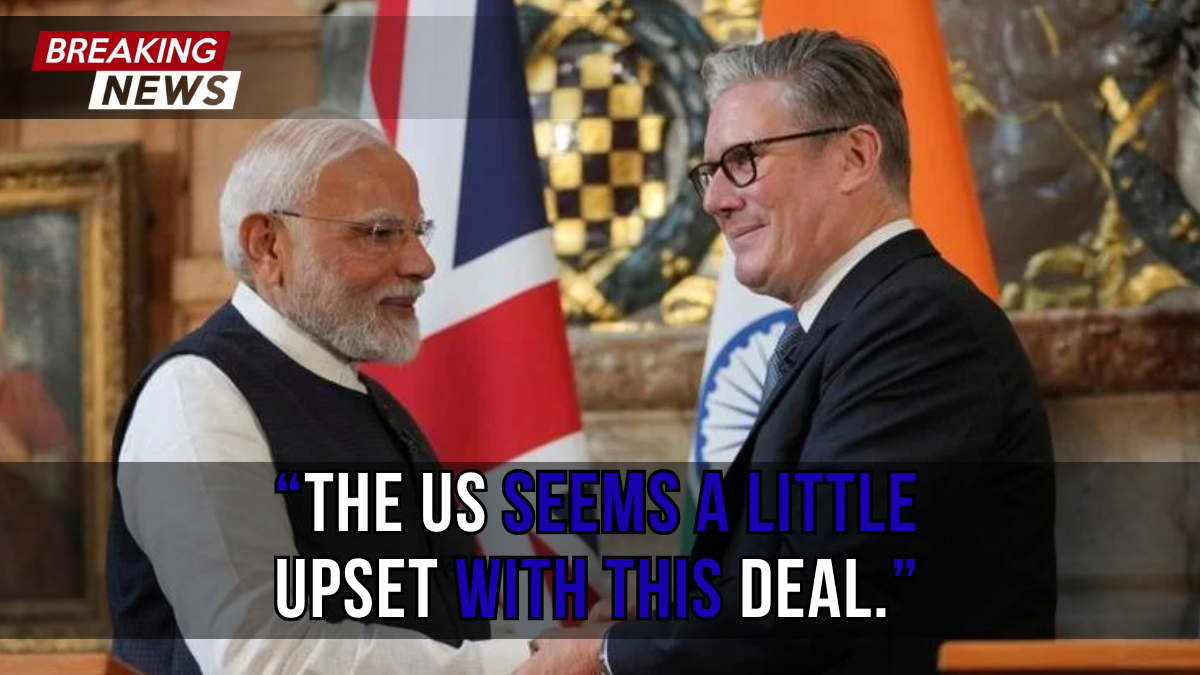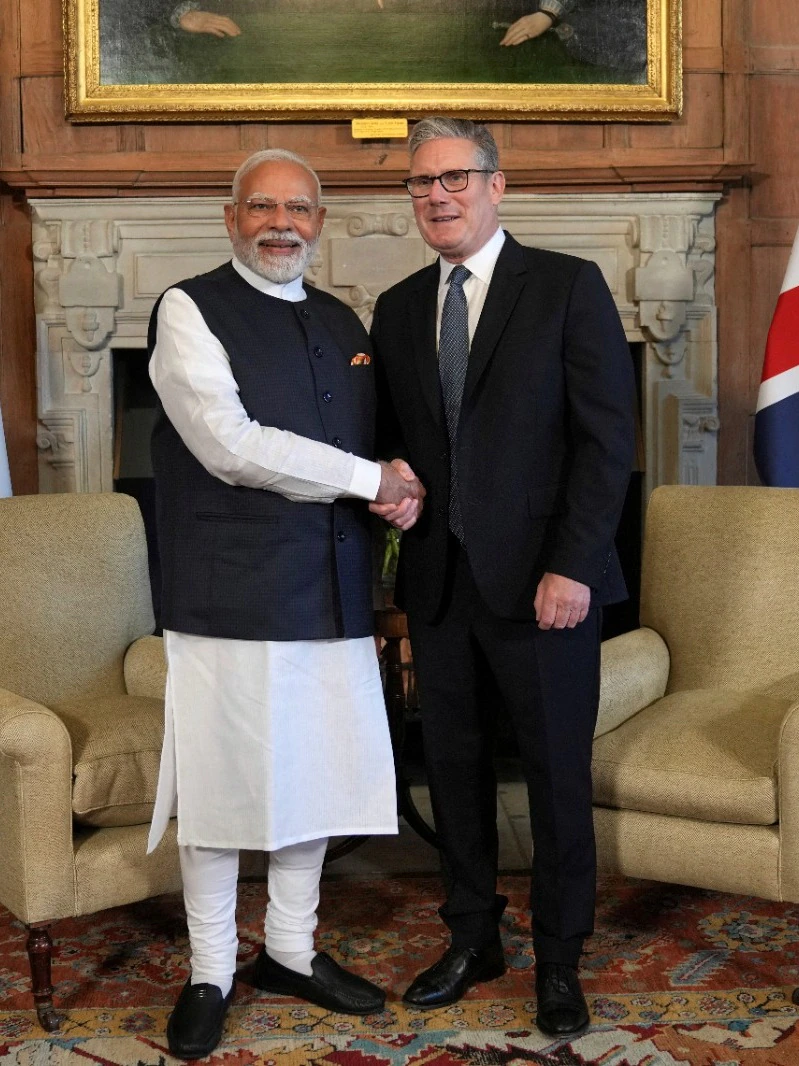The recent signing of the India-UK Comprehensive Economic and Trade Agreement (CETA) marks a significant milestone in international trade relations. This landmark deal, signed during Prime Minister Narendra Modi’s visit to Britain, represents India’s largest strategic partnership with an advanced economy and signals a potential shift in the country’s traditionally protectionist approach to trade.

Understanding the India-UK Trade Agreement
The CETA agreement demonstrates a careful balance between opening markets and protecting domestic interests. Under this deal, the UK has agreed to provide India with duty-free access to approximately 99% of its tariff lines, while India has opened about 90% of its tariff lines for duty-free imports from Britain.
This arrangement creates substantial opportunities for both nations. Indian exporters will benefit from zero tariffs on goods including textiles, footwear, gems, furniture, auto parts, machinery, and chemicals. The textile industry alone expects significant growth, with the Tiruppur Exporters Association predicting that India’s garment exports to the UK could double within three years.
However, the agreement isn’t without its limitations. The UK secured only 1,800 annual visas for niche professional roles such as yoga instructors and classical musicians, falling short of broader visa categories that India had hoped to secure for business visitors and IT professionals.
Strategic Concessions and Protected Sectors
One of the most notable aspects of this trade deal is India’s willingness to reduce tariffs on British vehicles a sector that comprises nearly 7% of the Indian economy. This represents a significant policy shift for a country that has historically used high tariffs to protect domestic manufacturers.
The automotive concessions are structured carefully to minimize disruption. India has committed to reducing auto tariffs from over 100% to 10% over a 15-year period, within annual import quotas starting at 10,000 units and rising to 19,000 in year five. This gradual approach allows domestic manufacturers time to adapt and compete more effectively.
Despite these concessions, India maintained firm positions on sensitive sectors. The agreement makes no provisions for agricultural items such as apples and walnuts, or dairy products including cheese and whey. As one senior Indian official noted, “There is no question of opening up the agriculture or dairy sector in any trade negotiation be it with the EU, Australia, or even the U.S.”

Economic Impact and Growth Potential
While the UK represents a relatively small trading partner for India currently, the agreement creates substantial room for growth. The deal positions the UK as a potential gateway to Europe, allowing goods destined for the broader European market to be routed through Britain under the duty-free arrangement.
This strategic positioning could attract foreign investment to India, as companies in other countries may view India more favorably as an investment destination to take advantage of the duty-free access to UK markets. The ripple effects could extend beyond bilateral trade, potentially enhancing India’s role in global supply chains.
Indian farmers stand to gain access to the UK’s $37.5 billion agriculture market, while British whisky and gin producers benefit from reduced import duties though these reductions will be phased over several years to allow domestic industries to adjust.
Challenges and Industry Concerns
Not all sectors view the agreement favorably. Indian alcohol companies have raised concerns about what they perceive as discriminatory practices in UK markets. The Confederation of Indian Alcoholic Beverage Companies (CIABC) argues that UK regulations requiring three-year maturation periods for whisky create unfair barriers for Indian spirits, which mature faster due to tropical climate conditions.
These companies contend that such non-tariff barriers effectively exclude Indian products from the broader whisky market in the UK and Europe, forcing them to be categorized as “Indian spirits” rather than whisky, which limits their market appeal.
Template for Future Negotiations
Perhaps the most significant aspect of this agreement lies in its potential as a template for future trade deals. India is currently in negotiations with several major economies, including the United States, European Union, and New Zealand. The approach taken with the UK gradual market opening while protecting sensitive sectors may well inform these upcoming negotiations.
However, larger economies are likely to demand greater concessions. The EU and US negotiations will test India’s strategy more rigorously, particularly given President Trump’s administration’s use of tariff threats to pressure trading partners into making concessions.
The US is particularly interested in greater access to India’s agricultural and dairy markets sectors that India has kept off-limits in the UK deal. This could create tension in future negotiations, especially as Trade Minister Piyush Goyal expressed hope for reaching a trade agreement with Washington that includes “special and preferred treatment.”
Balancing Growth and Protection
The India-UK trade deal reflects a nuanced approach to economic diplomacy. By offering significant concessions in manufacturing while protecting agriculture and dairy, India demonstrates its commitment to leveraging trade for economic growth while shielding millions of citizens dependent on subsistence farming and low-margin work.
This calibrated strategy acknowledges the reality of India’s economic structure a large population still dependent on agriculture alongside growing manufacturing and services sectors. The gradual implementation of tariff reductions and quota systems provides domestic industries with adaptation time while opening new opportunities for growth.

FAQs About INDIA-UK Trade Deal 2025
Q. What is the India-UK Trade Deal?
A. The India-UK Trade Deal is a major agreement aimed at boosting trade and investment between India and the United Kingdom. It focuses on reducing tariffs, enhancing market access, and fostering economic cooperation between the two nations.
Q. What are the key sectors impacted by this deal?
A. Key sectors likely impacted include technology, manufacturing, agriculture, pharmaceuticals, and textiles. The deal aims to strike a balance by providing market access while protecting vital domestic industries.
Q. How does this trade deal benefit both countries?
A. For India, the deal opens new opportunities for exports, investments, and job creation. For the UK, it strengthens trade ties with one of the world’s fastest-growing economies, allowing access to a vast consumer market and skilled labor.
Q. Does the deal affect tariffs on goods and services?
A. Yes, a significant focus of the deal is on reducing or eliminating tariffs on a range of goods and services, which is expected to make trade more cost-effective for businesses in both countries.
Q. What does this mean for future trade agreements?
A. The India-UK Trade Deal serves as a potential model for future agreements, especially for nations balancing global integration with domestic protections. It highlights the importance of adaptable, mutually beneficial terms in international negotiations.
The Road Ahead
As India prepares for negotiations with larger economic powers, the UK deal serves as both a proof of concept and a negotiating baseline. The agreement shows that India is willing to make meaningful market access commitments while maintaining red lines around sensitive sectors.
The success of this approach will likely influence India’s broader trade strategy and its position in the global economy. For businesses and investors, the deal signals India’s growing openness to international trade partnerships, albeit on carefully negotiated terms.
The India-UK CETA represents more than just a bilateral trade agreement it’s a statement of intent about India’s role in the global economy and a potential blueprint for how emerging economies can navigate the complex balance between market access and domestic protection in an increasingly interconnected world.
For More Information Click HERE
